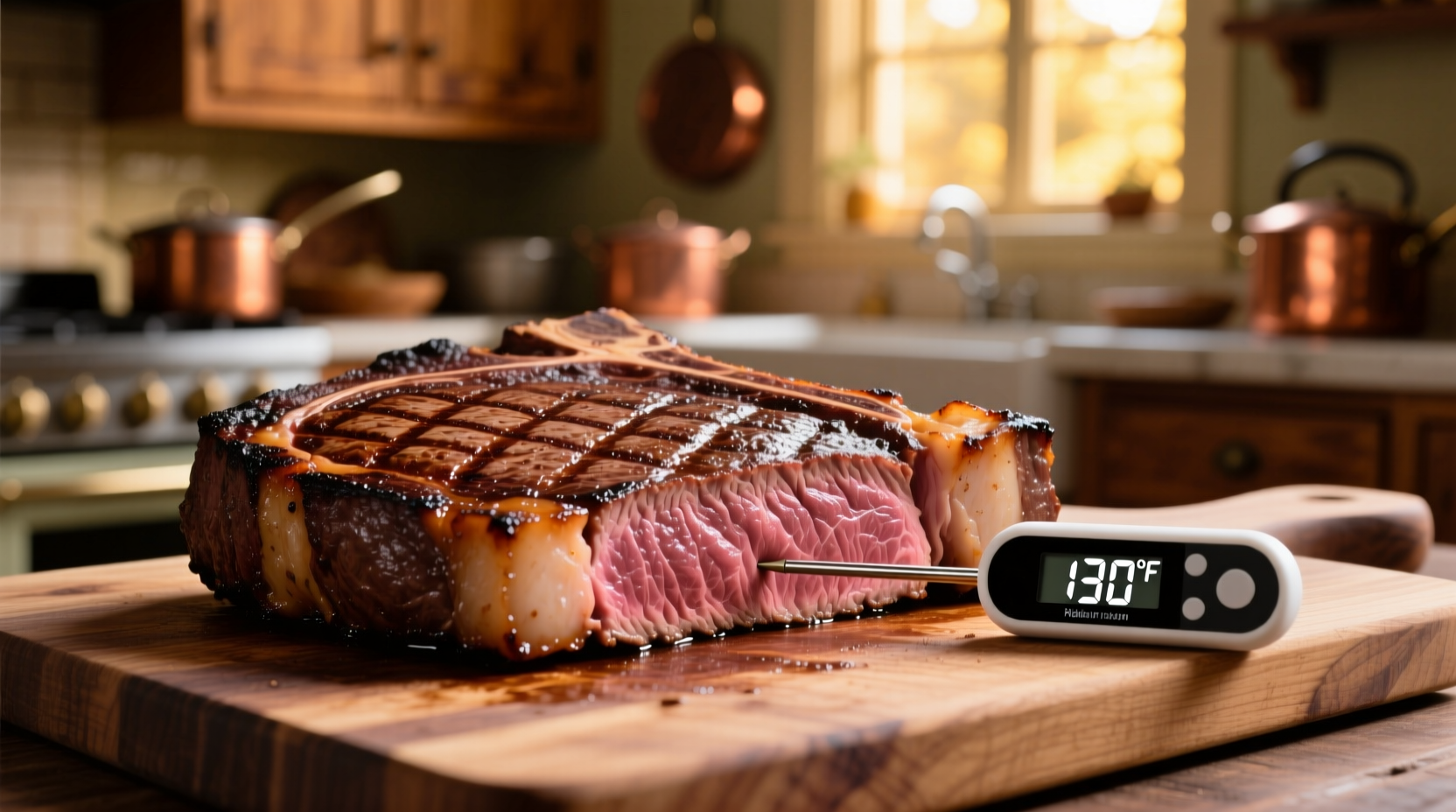Mastering steak cooking times transforms your meals from hit-or-miss to consistently perfect. Whether you're using a grill, cast-iron skillet, or oven, understanding the precise timing for your specific cut and thickness eliminates guesswork and delivers restaurant-quality results at home. This guide provides exact cooking durations backed by culinary science, so you'll never overcook or undercook your steak again.
Selecting Your Steak: The Foundation of Perfect Timing
Your steak's thickness and cut determine cooking duration more than any other factor. A 1.5-inch ribeye needs significantly different timing than a 0.5-inch flank steak. Before cooking, measure thickness with a ruler and note your desired doneness level. Remember that bone-in cuts cook slightly slower than boneless equivalents due to the bone's insulating effect.
Essential Tools for Accurate Steak Cooking
Forget unreliable methods like pressing with your finger. Professional chefs rely on two critical tools:
- Instant-read meat thermometer - The only way to guarantee perfect doneness
- Heavy-bottomed skillet or well-maintained grill - Ensures even heat distribution
Preheat your cooking surface until a water droplet sizzles violently upon contact. This high-heat sear creates the flavorful crust while protecting the interior from overcooking.

Standard Cooking Times by Method
Cooking duration varies significantly based on your method. These times apply to room-temperature 1-inch thick steaks cooked over medium-high heat:
| Cooking Method | Rare (120-130°F) | Medium-Rare (130-135°F) | Medium (135-145°F) |
|---|---|---|---|
| Cast-Iron Skillet | 3-4 min per side | 4-5 min per side | 5-6 min per side |
| Gas Grill | 4-5 min per side | 5-6 min per side | 6-7 min per side |
| Charcoal Grill | 3.5-4.5 min per side | 4.5-5.5 min per side | 5.5-6.5 min per side |
| Broiler | 4-5 min per side | 5-6 min per side | 6-7 min per side |
Adjusting for Steak Thickness: The Critical Factor
Thickness dramatically impacts cooking time. The USDA Food Safety and Inspection Service confirms that thicker steaks require longer cooking to reach safe internal temperatures without burning the exterior. Use this adjustment guide:
- 0.5-inch steaks: Reduce standard times by 30-40% (may cook entirely in 4-6 minutes total)
- 1.5-inch steaks: Increase standard times by 25-35% and consider finishing in a 350°F oven
- 2-inch+ steaks: Sear 3-4 minutes per side, then oven-finish at 325°F until reaching target temperature
Context Boundaries: When Standard Times Don't Apply
Several factors require timing adjustments beyond basic thickness considerations:
- Cold vs room temperature: Refrigerated steaks need 1-2 extra minutes per side
- Outdoor temperature: Winter grilling may require 15-20% longer cooking times
- Grill lid position: Closed lid creates oven-like environment, reducing cooking time by 10-15%
- Steak fat content: Higher marbling (like ribeye) cooks slightly faster than lean cuts (filet mignon)
Always verify with a thermometer rather than relying solely on timing, as these variables significantly impact results.
The Resting Period: Non-Negotiable for Juicy Results
Many home cooks skip this critical step, losing precious juices. The American Meat Science Association confirms that resting allows muscle fibers to reabsorb juices. Follow these guidelines:
- 1-inch steaks: 5 minutes minimum
- 1.5-inch steaks: 7-8 minutes
- 2-inch+ steaks: 10 minutes minimum
- Cover loosely with foil to retain warmth without steaming the crust
During resting, internal temperature typically rises 5-10°F (carryover cooking), so remove steaks from heat when 5°F below target temperature.
Pro Tips for Perfect Steak Every Time
Implement these professional techniques to elevate your results:
- Dry brine overnight: Salt steaks 24 hours before cooking for deeper flavor penetration
- Reverse sear for thick cuts: Cook low and slow first, then finish with high-heat sear
- Butter baste: Add herb-infused butter during final cooking minutes for enhanced flavor
- Check thermometer placement: Insert horizontally into thickest part, avoiding bone or fat pockets
Troubleshooting Common Steak Problems
Address these frequent issues with targeted solutions:
- Burnt exterior, raw interior: Heat was too high - lower temperature and extend cooking time
- Gray band under crust: Surface wasn't dry enough before searing - pat steaks thoroughly dry
- Uneven cooking: Flip steaks more frequently (every 60-90 seconds) for even heat distribution
- Steak sticks to pan: Wait until proper sear forms before attempting to flip











 浙公网安备
33010002000092号
浙公网安备
33010002000092号 浙B2-20120091-4
浙B2-20120091-4